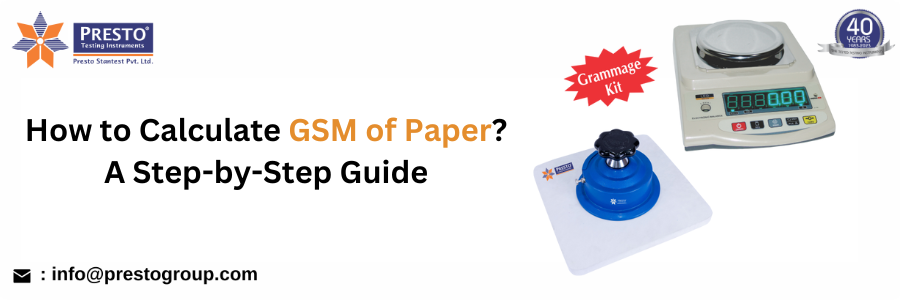Introduction to GSM
GSM, or Grams per Square Meter, is a standard measurement used to determine the weight and thickness of materials like paper, fabric, and packaging materials. It plays a crucial role in industries such as printing, textiles, and packaging, where material strength and durability are essential. By calculating GSM accurately, manufacturers and businesses can ensure product quality and select the appropriate material for their specific applications.
What is GSM?
GSM stands for Grams per Square Meter. It is a unit of measurement that indicates the weight of a material (such as paper, fabric, or cardboard) over a one-square-meter area. GSM is widely used in industries like paper manufacturing, packaging, textiles, and printing to determine the quality, durability, and thickness of materials.
GSM Full Form
The full form of GSM is Grams per Square Meter. This measurement standard helps in evaluating the weight and density of various materials, primarily used in:
- Paper Industry – To define the thickness and quality of paper.
- Textile Industry – To measure the fabric's density.
- Packaging Industry – To determine the strength of carton boxes and packaging materials.
GSM Full Form in Paper
In the paper industry, GSM determines the weight of a paper sheet per square meter. Higher GSM values indicate thicker, more durable paper, while lower GSM values indicate thinner, lighter paper. Common GSM values for different types of paper include:
|
GSM Range |
Paper Type |
|
35-55 GSM |
Newspaper |
|
70-100 GSM |
Standard Office Paper |
|
120-150 GSM |
Brochures and Flyers |
|
200-350 GSM |
Business Cards and Postcards |
|
400+ GSM |
Thick Cardstock |
How to Calculate GSM of Paper
To calculate the GSM of paper, you can use the following GSM calculation formula:
GSM = (Weight of the Sample in grams) / (Area of the Sample in square meters)
Steps to Calculate GSM:
- Take a sample sheet of paper and measure its dimensions (length and width in cm or mm).
- Convert the area into square meters (m²).
- Weigh the sample using a precision scale.
- Use the formula: GSM = Weight (grams) / Area (m²).
Example Calculation:
If a paper sample measuring 20 cm x 20 cm (0.04 m²) weighs 4 grams: GSM = 4 grams / 0.04 m² = 100 GSM
How to Calculate GSM of Carton Box
The GSM of a carton box is calculated similarly to paper, but since cartons consist of multiple layers (corrugated board), additional calculations are needed.
Steps to Calculate GSM of a Carton Box:
- Identify the layers – Corrugated boxes have different layers like the outer liner, inner liner, and fluting.
- Measure the dimensions of a sample (length, width, and thickness).
- Weigh the sample accurately.
- Apply the GSM formula separately for each layer and sum up the values to get the total GSM.
Example Calculation:
If the three layers of a carton box weigh 150 GSM (inner), 180 GSM (fluting), and 150 GSM (outer), the total GSM will be: 150 + 180 + 150 = 480 GSM
GSM Calculator: How It Works
A GSM calculator is an online or manual tool used to quickly determine the GSM of a material. By entering the weight and dimensions of a sample, the calculator automatically applies the GSM formula to give an accurate result.
How to Use a GSM Calculator:
- Input the sample weight (grams).
- Enter the dimensions (length & width in cm or m).
- Calculate the GSM using the formula or automated tool.
- Obtain the GSM value instantly.
Advantages of Using a GSM Calculator:
- Saves time and effort in manual calculations.
- Reduces errors in measurement.
- Provides quick and accurate results for various industries.
Importance of GSM in Different Industries
1. Paper Industry:
- Determines paper thickness and quality.
- Helps in selecting the right paper for printing, packaging, and publishing.
2. Textile Industry:
- Used to measure fabric weight.
- Helps in choosing fabrics for clothing, upholstery, and industrial applications.
3. Packaging Industry:
- Ensures the strength of carton boxes and packaging materials.
- Helps in designing durable and cost-effective packaging solutions.
Frequently Asked Questions (FAQs)
1. What is GSM used for?
GSM is used to measure the weight and thickness of materials like paper, fabric, and packaging materials to determine their quality and durability.
2. How does GSM affect paper quality?
Higher GSM indicates thicker, stronger paper, while lower GSM indicates thinner, more lightweight paper. The choice depends on the intended application, such as printing, packaging, or writing.
3. Can GSM be calculated for fabrics?
Yes, GSM is widely used in the textile industry to determine fabric density and weight, which helps in selecting the right fabric for different uses.
4. Is higher GSM always better?
Not necessarily. A higher GSM is suitable for durability and sturdiness, while a lower GSM is preferred for flexibility and lightweight applications.
5. How do I choose the right GSM for my needs?
Choosing the right GSM depends on the purpose of the material. For example, 80-100 GSM is good for office paper, while 250-400 GSM is ideal for business cards and packaging.
Final Thoughts
Understanding GSM (Grams per Square Meter) is essential for industries dealing with paper, textiles, and packaging materials. Whether calculating GSM manually or using a GSM calculator, accurate measurements ensure quality control and efficient production processes. By applying the correct GSM calculation formula, manufacturers and buyers can select the appropriate materials for their specific needs.
Get the Best GSM Calculator at the Right Price!
Looking for an accurate and reliable GSM calculator? Get the best GSM calculator price at Presto Group! Contact us today at +91 9210 903 903 or email us at info@prestogroup.com to find the perfect solution for your business needs.
Would you like to know more about GSM applications in other industries? Feel free to ask!
